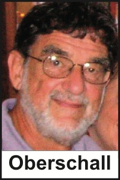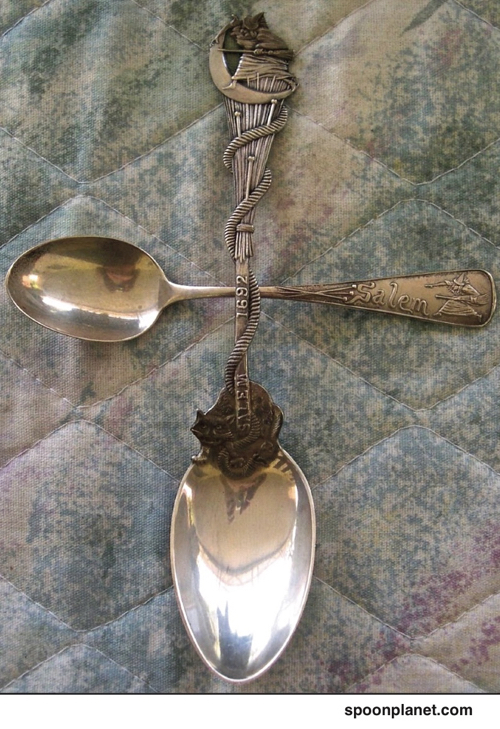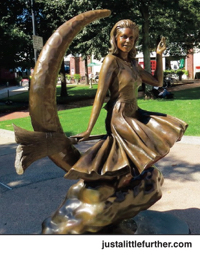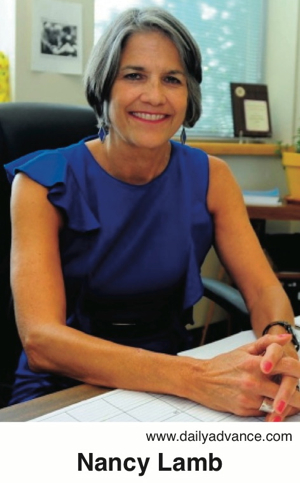Rascals case in brief
In the beginning, in 1989, more than 90 children at the Little Rascals Day Care Center in Edenton, North Carolina, accused a total of 20 adults with 429 instances of sexual abuse over a three-year period. It may have all begun with one parent’s complaint about punishment given her child.
Among the alleged perpetrators: the sheriff and mayor. But prosecutors would charge only Robin Byrum, Darlene Harris, Elizabeth “Betsy” Kelly, Robert “Bob” Kelly, Willard Scott Privott, Shelley Stone and Dawn Wilson – the Edenton 7.
Along with sodomy and beatings, allegations included a baby killed with a handgun, a child being hung upside down from a tree and being set on fire and countless other fantastic incidents involving spaceships, hot air balloons, pirate ships and trained sharks.
By the time prosecutors dropped the last charges in 1997, Little Rascals had become North Carolina’s longest and most costly criminal trial. Prosecutors kept defendants jailed in hopes at least one would turn against their supposed co-conspirators. Remarkably, none did. Another shameful record: Five defendants had to wait longer to face their accusers in court than anyone else in North Carolina history.
Between 1991 and 1997, Ofra Bikel produced three extraordinary episodes on the Little Rascals case for the PBS series “Frontline.” Although “Innocence Lost” did not deter prosecutors, it exposed their tactics and fostered nationwide skepticism and dismay.
With each passing year, the absurdity of the Little Rascals charges has become more obvious. But no admission of error has ever come from prosecutors, police, interviewers or parents. This site is devoted to the issues raised by this case.
On Facebook
Click for earlier Facebook posts archived on this site
Click to go to
Today’s random selection from the Little Rascals Day Care archives….
Click for earlier Facebook posts archived on this site
Click to go to
Today’s random selection from the Little Rascals Day Care archives….
UNC sociologist sought to deflate moral panic
 March 6, 2013
March 6, 2013
Anthony “Tony” Oberschall, professor (now emeritus) of sociology at UNC Chapel Hill, wrote extensively – if not prominently – about the insanity of the Little Rascals case. How was Oberschall able to resist the storyline that seduced so many others?
“Before retiring from UNC in 2005,” he recalls, “I taught in universities for 40 years. One of my fields of writing and research concerned collective behavior – collective myths, false beliefs, rumors, how they originate and why they are believed.
“As the Little Rascals prosecution unfolded right before my eyes (actually, as reported in the News & Observer), it became obvious to me that this was but one more instance of moral panic, false beliefs and miscarriage of justice….”
Oberschall likens the prosecution narrative to “the widely believed Iraqi WMD story disseminated by the Bush administration in 2002. Unthinking acceptance of what the authorities are asserting, alas, happens all too often.”
In early 1993, Oberschall sent the N&O both an op-ed column and a response to a Dennis Rogers column, but neither appeared nor drew a response from the paper. (They have now been posted on the Bookshelf of Case Materials on this site.)
“At that point,” he says, “having been stonewalled, I decided to research Little Rascals in depth and wrote several times about it in scholarly publications in subsequent years.”
More about Oberschall’s research in Thursday’s post.
Salem profits from its historic shame – so why shouldn’t Edenton?
 Oct. 29, 2015
Oct. 29, 2015
“You have to be … inventive to brand yourself as a Halloween capital – extending a one-night affair into a monthlong celebration and inviting hundreds of thousands of visitors into your streets – when for centuries you were known as the community that put innocents to death for witchcraft. How did Salem, Mass., repackage a tragedy as a holiday, appointing itself ‘Witch City’ in the process?…
“About 200 years after the trials, a Salem silversmith issued a souvenir spoon, featuring a witch holding a broomstick. Other mementos followed. It was difficult to hit the right note: The Salem-based Parker Brothers company issued, then quickly discontinued, a witchcraft card game…. When Arthur Miller visited Salem in 1952, he discovered the subject was taboo….
“Meanwhile the city fell on hard times…. As if by magic, a different kind of enchantment arrived in the form of the ABC sitcom, ‘Bewitched.’ It seemed that an ancestor of Samantha, the main character, had been convicted of witchcraft during the trials….
“In Samantha’s wake, Salem recast its inglorious past, or at least some version of it…. The city transmuted its secret shame into its saving grace. In 1982 it introduced ‘Haunted Happenings,’ later extending the holiday into a four-week festival. ‘Salem owns Halloween like the North Pole owns Christmas,’ The Boston Globe declared…. Halloween is to some extent year-round in Salem, where you might well bump into a goblin in a sandwich shop in July.
 “Three hundred years after the trials, Salem unveiled an elegant, understated memorial to the victims. Three hundred and thirteen years after the trials, it unveiled a gleaming statue of the ‘Bewitched’ star, Elizabeth Montgomery, on a broom. Not everyone liked the idea: A former historic district commissioner clucked that one might as well plant a likeness of Colonel Klink at Auschwitz. But the 1992 memorial was arguably not itself possible without ‘Bewitched.’ It isn’t easy to commemorate an atrocity. ABC’s domestic goddess had both laundered and folded the history….”
“Three hundred years after the trials, Salem unveiled an elegant, understated memorial to the victims. Three hundred and thirteen years after the trials, it unveiled a gleaming statue of the ‘Bewitched’ star, Elizabeth Montgomery, on a broom. Not everyone liked the idea: A former historic district commissioner clucked that one might as well plant a likeness of Colonel Klink at Auschwitz. But the 1992 memorial was arguably not itself possible without ‘Bewitched.’ It isn’t easy to commemorate an atrocity. ABC’s domestic goddess had both laundered and folded the history….”
– From “First, Kill the Witches. Then, Celebrate Them.” by Stacy Schiff in the New York Times (Oct. 24)
Edenton may lack the springboard of a popular sitcom, but this 1993 letter writer foresaw the tourism potential of remembering the Little Rascals case. Proposals for a statue – or a spoon – anyone?
‘A personal mission to have Bob put behind bars’
 June 14, 2015
June 14, 2015
Long after Bob Kelly reclaimed his freedom, he continued to fear that prosecutor Nancy Lamb was searching for yet another excuse to send him back to prison.
His apprehension was entirely reasonable.
In 1996, less than a year after the North Carolina Court of Appeals overturned Kelly’s conviction in the Little Rascals case, Lamb had had him indicted on a new round of sex charges, supposedly unrelated and transparently dubious.
According to correspondence I recently happened onto, a lawyer who attended a scheduling conference for Kelly’s upcoming trial was startled by Lamb’s unprofessional demeanor:
“It was very obvious… that Nancy is on a personal mission to have Bob put behind bars for something. Her voice and her hands were noticeably shaking throughout the meeting and at times she wiped moisture from her eyes.
“I just don’t see how she can go through an entire trial without exposing to the jury this ‘witch hunt’ mentality that has consumed her….”
For whatever reason – she claimed, as usual, to be looking out for the ‘victim’ – Lamb’s decade-long pursuit of Bob Kelly ended anticlimactically. She dropped the last charges in 1999.
MPD renamed DID – but it’s still bunk
May 31, 2013
“After the DSM-III, often called the ‘Bible’ of psychiatric diagnosis, included (Multiple Personality Disorder) in 1980, thousands of spurious cases emerged in the next two decades, and special psychiatric clinics arose to treat them. Yet faced with evidence of this disastrous epidemic, the DSM-IV did not delete the diagnosis. Instead, the manual renamed it Dissociative Identity Disorder.
“ ‘MPD presented a dilemma for me,’ says (psychiatrist Allen Frances, who oversaw DSM-IV). ‘We took scrupulous pains to present both sides of the controversy as fairly and effectively as possible – even though I believed one side was complete bunk.’ How do you ‘fairly’ argue for a diagnosis you think is complete bunk? Where’s the methodological rigor? Why did it take malpractice suits to close the psychiatric MPD clinics and not the presumed voice of scientific authority, the DSM? Dissociative Identity Disorder remains in the DSM-5.”
– From “How Psychiatry Went Crazy” by Carol Tavris in the Wall Street Journal (May 17, 2013)
“Another disturbing by-product of the MPD diagnosis is the prevalence of alleged repressed memories of satanic ritual abuse. The association of satanic ritual abuse in MPD diagnoses has been attributed to the belief by numerous MPD adherents in the existence of an intergenerational satanic cult conspiracy that has murdered thousands without leaving a trace of evidence.”
– From “Repressed Memory, Multiple Personality Disorder and Satanic Ritual Abuse,” an amicus brief filed in Supreme Court of Georgia, Kahout v. Charter Peachford Behavioral Health System (September 1998)











0 CommentsComment on Facebook